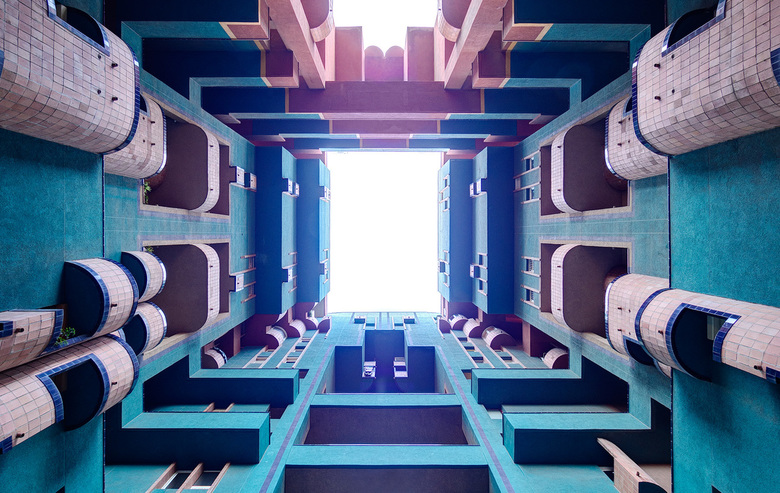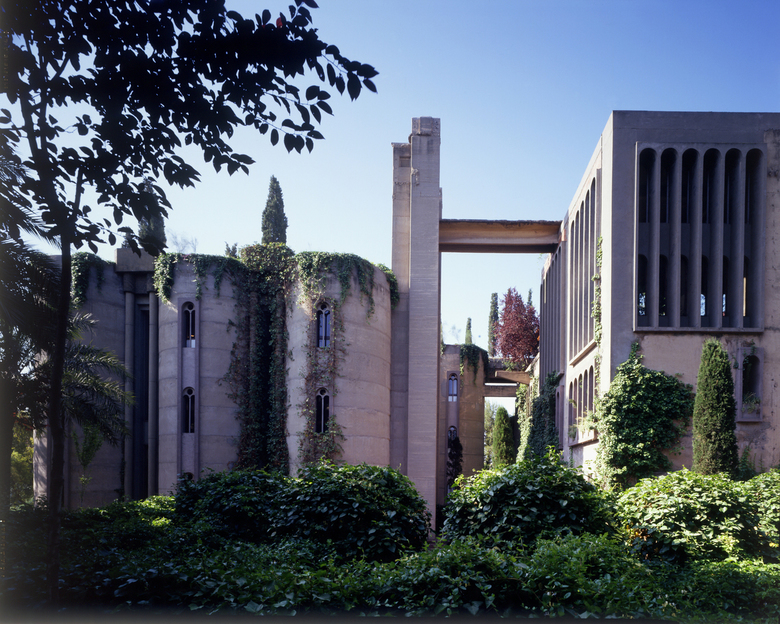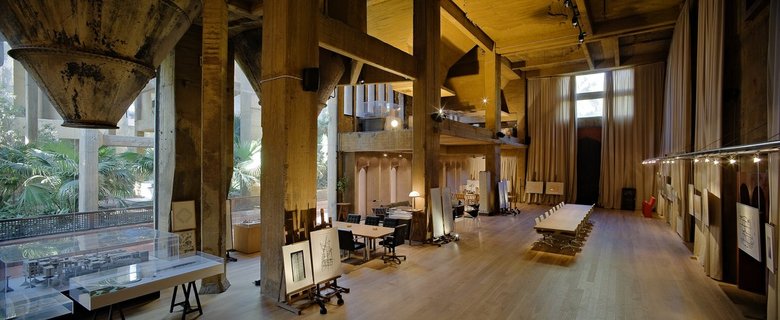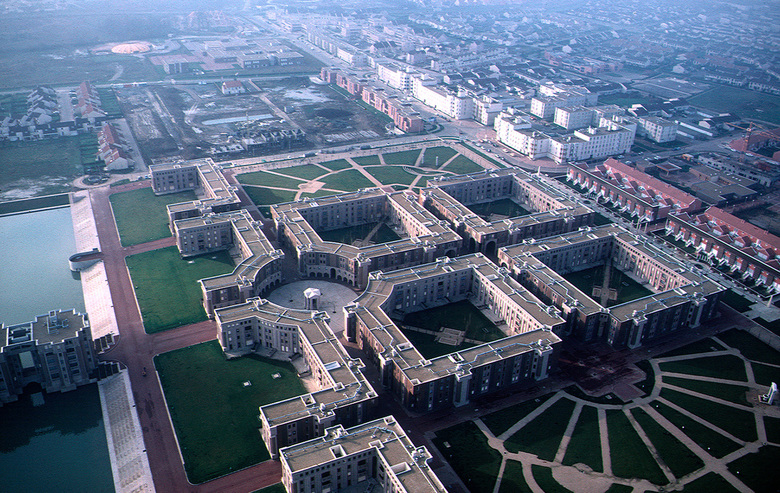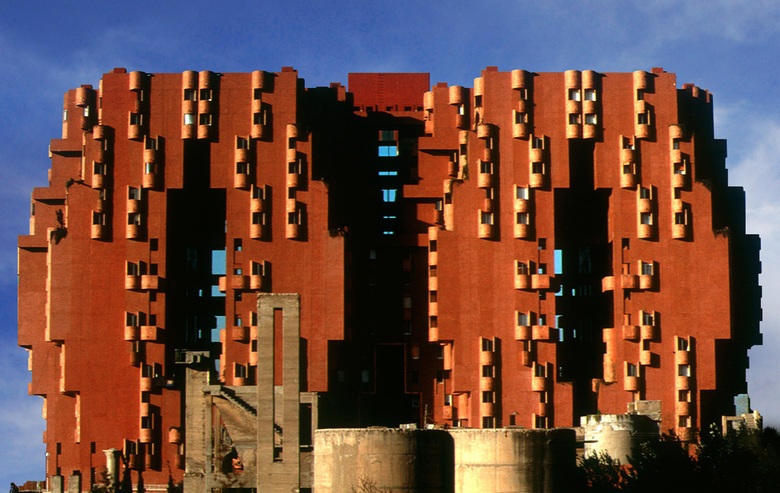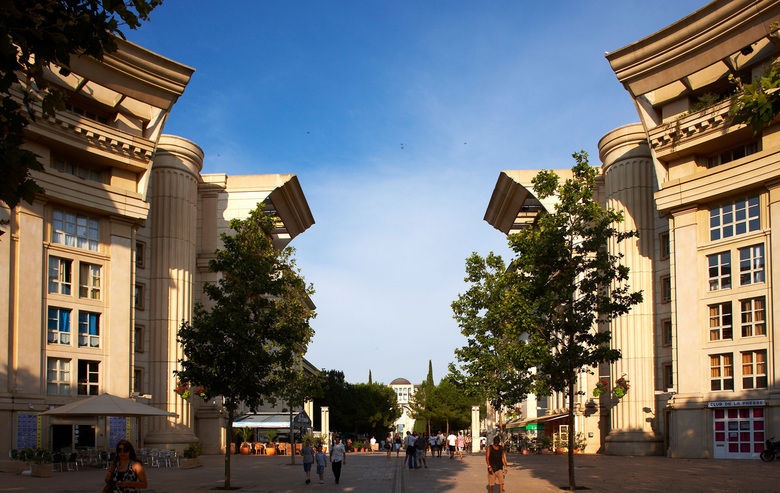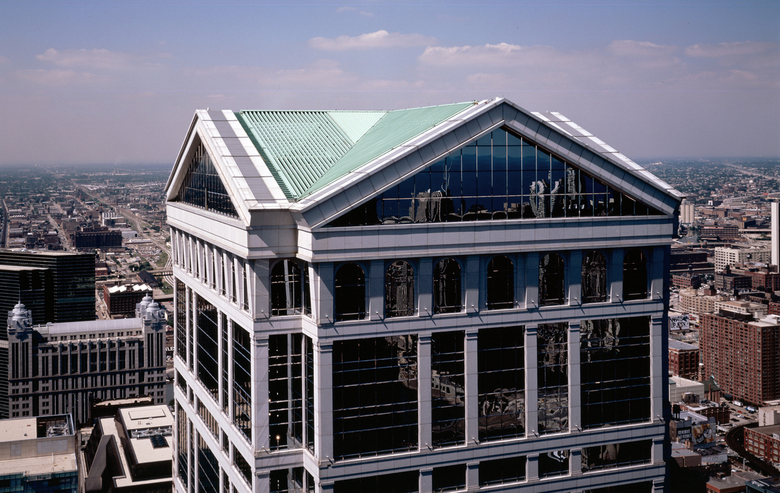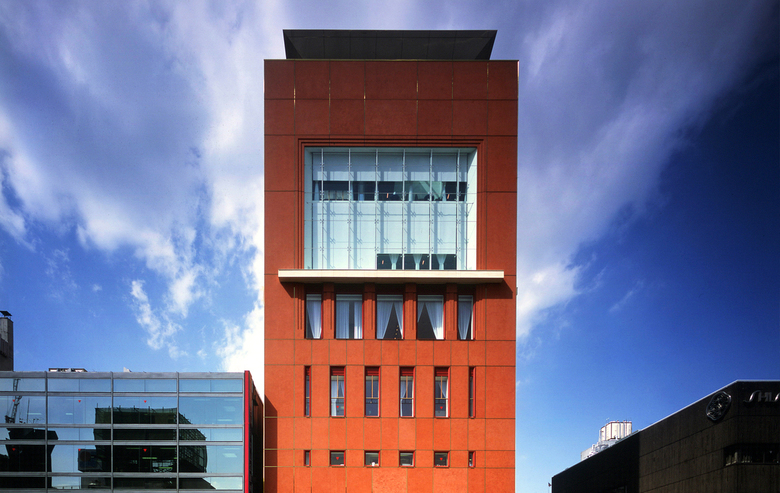Versailles for the People
Ulf Meyer
5. December 2019
Walden 7, Sant Just Desvern, Spain, 1974 (All photographs courtesy of Ricardo Bofill Taller de Arquitectura)
Spanish architect Ricardo Bofill turns 80 years old today, December 5, 2019.
Postmodern architecture seems to be as unloved today as Modern architecture was in the late 1960s. Few contemporaries see the values and achievements of Postmodern architecture and urban design behind the thick layer of kitsch and clumsiness that its later phase produced. Among the European heavyweights of PoMo, such as Aldo Rossi and brothers Léon and Rob Krier, Spanish architect Ricardo Bofill Leví is the least theoretical and by far the most productive architect in this realm. Bofill’s 80th birthday is an excellent opportunity to compare the vast quantities of his output with the under-the-radar nature of it. He has designed hundreds of buildings in dozens of countries — thousands of people live in apartments he designed, making him the most underrated, over-productive European architect of his generation. Born in 1939 in Barcelona, Bofill went on to become the Energizer Bunny of Postmodern architecture. The giant size of his portfolio is in stark contrast to the lack of acclaim by critics or the press that his work has received.
Ricardo Bofill Taller de Arquitectura, Sant Just Desvern, Barcelona, Spain, 1973-2012
Bofill has said his “father was a bourgeois Catalan architect and his mother a Jew from Venice.” The fact that his father was also a builder and developer helped the junior to put his skills to the test at a young age. As a teenager he designed his first building, a summer home in Ibiza, and by the time he was 23 he led his own “Taller de Arquitectura.” The conversion of a giant former cement factory into his studio and residence became a built manifesto and remains one of his best works. Eight cement silos were turned into a true “palace of an architectural office” including an appropriately named “Cathedral" room for meetings. Cement also forms the main ingredient of Bofill’s preferred building material: Precast concrete. But because buildings of precast concrete can be bland, repetitive or even oppressing, Bofill gave the material a shape — often grand pseudo-Classicist decoration.
Ricardo Bofill Taller de Arquitectura, Sant Just Desvern, Barcelona, Spain, 1973-2012
The turning point of 1968Timing played an important role for Bofill’s success. In 1967 he published his manifesto, “La Ciudad en el Espacio” (The City in Space), in which he laid out his take on using stylistic characteristics of bygone eras, breaking with the functionalism of postwar modernism. Just after the student protests of 1968 had turned Europe upside down, Bofill formed a branch office in Paris and started to work on several “New Towns” in France. Since the misery of the banlieue is proverbial, Bofill used “symbolic elements” that gave the cheaply built housing blocks monumental expressions.
Les Arcades du Lac, Saint Quentin-en-Yvelines, Paris, France, 1982
Typologies and stylesThe Walden 7 housing complex in Sant Just Desvern of 1975 was the first case study for turning a cluster of hundreds of residences into a miniature mega-city in its own right. The name of the building is inspired by Walden Two, B. F. Skinner's science-fiction novel depicting a utopian community. Bofill’s “classical” composition was supposed to “resolve the monotony of pre-fabrication.” The towers form curves and come into contact with the neighboring towers, resulting in a vertical labyrinth with seven courtyards and apartments formed of modules with small, uniform windows. The project also experimented with new ownership models and new family models. People can inhabit two or three modules horizontally or vertically, and all financing, construction, price and sale of apartments were handled by the architect.
Walden 7, Sant Just Desvern, Spain, 1974
With early success, the scale and range of Bofill’s projects also exploded, reaching from urban designs such as the one for the Barcelona Harbour to modern infrastructure buildings such as the airports of Barcelona and Malaga. The most notorious example of this approach, also in France, is La Maison d’Abraxas housing blocks, an “inhabited monument” situated in the Paris suburb of Noisy-le-Grand. The blocks became known not as anonymous slabs but as a "Versailles for the people" – a splendid contradiction in itself. Maintenance costs turned out to be astronomical and the client went bankrupt. But that did not stop Bofill at all.
In the 1960s, Spain faced a critical housing situation because of heavy immigration into cities similar to other parts of the world at the time. The difference between Bofill’s preference for prefab modules and Archigram, the Metabolists in Japan, Moshe Safdie’s Habitat in Canada, or Yona Friedman’s unbuilt superstructures was that in Taller’s projects there was no infrastructure into which these units were placed. They were simple low-tech aggregations planned for growth. Francisco Franco’s government did not agree with these projects, but Bofill saw them as a way to depart from Utopian morals. He foresaw a “city as a result of demand” that would be permanently unfinished. Bofill was one of the first Spanish architects who traveled and worked abroad. But “I do not do international architecture," he says. “My culture is the Mediterranean and my styles are the result of my travels.”
Barrio de Antigone, Montpellier, France, 1979-2000
Hollow gesturesThe Antigone complex built in Montpellier in the 1980s, with its absurd classical forms and geometries, was the climax of Bofill’s precast-concrete designs. “Pueblos and palaces are my sources of inspiration,” says Bofill, who could turn a cement factory into a castle and a social housing estate into a fortress. With Postmodernism increasingly ridiculed, Bofill turned to glass and steel facades and managed to re-invent himself as a corporate architect, designing the headquarters of some of France’s biggest financial companies such as BNP Paribas, Axa and GAN. Bofill also became the architect of choice for the French haute couture, designing the Cartier Headquarters and later those of Christian Dior, both in the French Capital.
United Continental (77 West Wacker Drive), Chicago, USA, 1992
International expansion – from hippie to Neoconservative?France was not really a foreign country for Bofill, who spent his childhood days at the Lycée Francais in Spain and later worked in and from Paris. With the chameleon-like metamorphosis of Bofill’s persona and rhetoric, ideology and style, he ended up designing all over the world. Chicago’s 77 West Wacker Drive is one example, a 50-story office tower and the most prominent example of Postmodern architecture in the city of Ludwig Mies van der Rohe and Skdimore, Owings & Merrill. The facade consists of glass framed in Portuguese white granite, with horizontal bands linked by pilasters and a top floor shaped like a Greek pediment.
The Shiseido Building, on the other hand and on another continent, stands on a prominent corner in Tokyo. In an effort to get noticed in the brightly lit visual overkill that is Ginza, the stucco façade is all red, with high windows and red awnings. This branch of the famous Japanese cosmetics company also houses a restaurant, conference rooms, and art gallery. Contrast that with another Bofill Building in Tokyo, completed only three years prior, to get a sense of his design schizophrenia. The Aoyama Palacio at the Eastern end of Tokyo’s premier Omotesando Boulevard is an insult to good taste: Flat gables are mounted like stickers to the child-like facade that says, “European history.”
Shiseido Building, Tokyo, Japan, 2001
Reflecting on his long career, Bofill now says, “As a young man I wanted to be famous, after that I just kept going, following my own principles.” The only thing connecting his disparate designs over the decades is the claim that “each of the works is designed as part of a city,” a central truism of Postmodern thought. But as just another Postmodern designer, Bofill is too unique. “To be creative, you need controlled fear,” he says in the recently published Visions of Architecture monograph. “The Creator must be on the border to insanity.”
